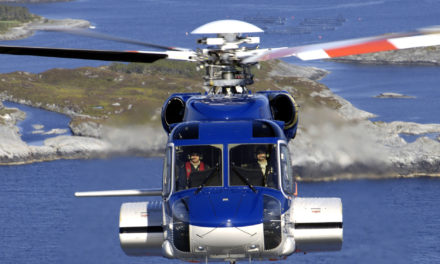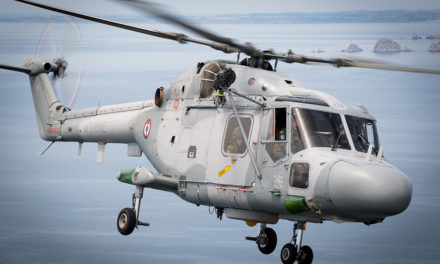By Frédéric Lert
Helicopters are facing a growing threat of air collision from “uncooperative” drones operating in the lower layers of the airspace. The development of an anti-collision system is now a priority to ensure flight safety, both in the military and civilian world.
Taking the business world as a model, the French armed forces have set up a structured approach to encourage innovation. Incentives are also very strong within DGA Essais en Vol (DGA EV) the French Flight Test center which is part of the French Armement General Directorate.
This is evidenced by the creation in early 2019 of the Innovation Flight Test Lab (IFTL). In its three years of existence, the IFTL has supported 106 projects by helping their innovators manage the administrative part, find funding and partners… “The objective is to go fast, the projects must result in a few months on a prototype to demonstrate, or not, the viability of a solution,” notes engineer Thibault L. Lab manager for the Cazaux site of DGA EV. “The laboratory then intervenes to develop the project and scale it up, with the help of the Defense Innovation Agency.

The actions carried out concern fields as diverse as risk management, connectivity and air safety. For example, we are currently working on flight safety and the development of a DCAS (Drone Collision Advisory System) demonstrator for helicopters.
“We put out a call for expressions of interest on this topic via the Alienor defense innovation cluster, with a wide range of large companies, SMEs and start-ups, with the aim of obtaining a system capable of informing a helicopter pilot about the approach of one or more drones,” explains engineer Thibault L. “The system must warn the pilot in the event of a collision situation. The pilot then manages the avoidance based on the information provided by the system. This is different from a TCAS, which can coordinate the avoidance maneuver between two aircraft, something impossible to achieve with a non-cooperative drone.
Helicopters, as users of the lower layers of the airspace, are the most exposed to the risk of collision with drones. It has the necessary volume on board to carry equipment. Its speed of advance, relatively weak compared to the planes, requires ranges of detection less important to iso notice before impact. “On the other hand, it is a demanding aircraft in terms of coverage, since its ability to hover requires us to monitor its environment over 360°,” emphasizes our engineer.
Following the call for projects, the IFTL received 15 offers qualified as “very interesting and varied”. The selected solution, developed in collaboration with DELAIR and CERBAIR, is based on radio-frequency surveillance detectors, artificial intelligence for the recognition of the electromagnetic signatures of UAVs, and optical means for more detailed characterization and tracking of the detected object.
“We could also imagine using a radar or lidar like those that exist in the field of autonomous ground vehicles,” adds Thibaut L. “These systems are light and compact, two qualities that we are looking for, and they work in speed ranges and with angular apertures close to what suits us.“
The project began in October 2021 and will be completed in the summer of 2022 with flight tests, led by DGA EV, to assess its performance level. DGA EV is working with the company DELAIR, which will implement the UAVs, the HMI part, the optical sensors and associated processing and the integration of the DCAS. CERBAIR, subcontractor of DELAIR, provides the radio-frequency brick. DGA EV is organizing the flight tests and is also working on the interface with the test bench helicopter, which it is also supplying.
“Our objective is to create a system that offers the best ratio between benefit and cost, without necessarily being perfect,” notes Thibault L. “Our role at IFTL is to reveal the potential of a solution and to accelerate its integration as a priority with the forces. It is then up to the industrial partner to develop and certify the equipment.
What about a cooperative drone?
In France, civilian drones weighing more than 800g are legally required to signal themselves with an electronic signature based on Wifi emissions. But this rule was dictated to meet a need for safety, by the desire to protect sensitive sites and not in a perspective of air safety. However, IFTL is working on an onboard system that would detect these Wifi signals in order to evaluate the feasibility of collision avoidance.
“We are currently working with the FFA to test collision avoidance solutions that take into account the high traffic mix encountered in particular in class G (uncontrolled airspace). The display of signals from different sources in the cockpit has led us to work on data fusion to limit the number of screens.
















